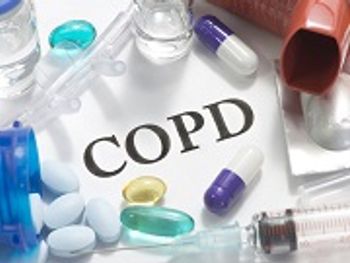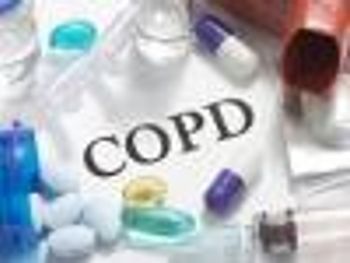
Patients with chronic obstructive pulmonary disease have reductions in their brains' gray matter related to the processing of dyspnea, fear, and sensitivity to painful stimuli.

Patients with chronic obstructive pulmonary disease have reductions in their brains' gray matter related to the processing of dyspnea, fear, and sensitivity to painful stimuli.

Michael Cawley, BS, PharmD, RRT, CPFT, FCCM, professor of clinical pharmacy at the University of the Sciences, discusses counseling points pharmacists should make when demonstrating proper inhaler use.

Michael Cawley, BS, PharmD, RRT, CPFT, FCCM, professor of clinical pharmacy at the University of the Sciences, discusses how new technology is changing the inhaler manufacturing industry.

Michael Cawley, BS, PharmD, RRT, CPFT, FCCM, professor of clinical pharmacy at the University of the Sciences, discusses some important patient-related factors to consider when selecting among available inhalers.

Cardio selective beta blockers reduced the relative risk of COPD exacerbations in a recent study.

Cinqair is used with other medications for the maintenance treatment of severe asthma in patients aged 18 years or older.

Michael Cawley, BS, PharmD, RRT, CPFT, FCCM, professor of clinical pharmacy at the University of the Sciences, demonstrates proper technique for inhaler devices.

Michael Cawley, BS, PharmD, RRT, CPFT, FCCM, professor of clinical pharmacy at the University of the Sciences, discusses adverse effects associated with asthma and COPD treatments.

Michael Cawley, BS, PharmD, RRT, CPFT, FCCM, professor of clinical pharmacy at the University of the Sciences, discusses what pharmacists should know about CAT and mMRC scores.

Michael Cawley, BS, PharmD, RRT, CPFT, FCCM, professor of clinical pharmacy at the University of the Sciences, discusses how to classify symptom severity, assess control, and monitor therapy for asthma and chronic obstructive pulmonary disorder.

Michael Cawley, BS, PharmD, RRT, CPFT, FCCM, professor of clinical pharmacy at the University of the Sciences, discusses the current guidelines pharmacists should refer to when selecting respiratory medication inhalers and managing asthma and chronic obstructive pulmonary disorder.

Michael Cawley, BS, PharmD, RRT, CPFT, FCCM, professor of clinical pharmacy at the University of the Sciences, discusses what comorbid conditions to look out for among asthma and COPD patients.

Michael Cawley, BS, PharmD, RRT, CPFT, FCCM, professor of clinical pharmacy at the University of the Sciences, discusses what therapeutic options are available for managing asthma and chronic obstructive pulmonary disorder.

The role of pharmacists in the treatment of acute coronary syndrome, COPD, atrial fibrillation, heart failure, opioid-induced constipation, and type 2 diabetes.

Pulmicort Respules had annual sales of $217 million in the United States for 2015.

Adding tiotropium bromide inhalation spray to other asthma therapies improved lung function and symptom control.

Lebrikizumab caused a significant reduction of asthma exacerbations in people with high levels of serum periostin or blood eosinophils.

Testosterone and megestrol acetate may present new treatment option for chronic obstructive pulmonary disease (COPD) cachexia.

Telehealth offers a support system for patients with specific chronic illnesses prone to exacerbations and remissions, such as COPD.

BLA for omalizumab (Xolair) is indicated for children aged 6 to 11 years with moderate-to-severe persistent asthma.

Treating COPD can be a complex undertaking.

Imagine if your metered-dose inhaler could fit into your wallet.

Some pharmacy interventions for COPD include education on medication and motivational interviewing to encourage smoking cessation and adherence.

Strong evidence suggests increased risk for respiratory, cardiovascular, and overall mortality for patients with RA.

Nonadherence to chronic obstructive pulmonary disease treatment worsens patient health outcomes and increases related costs.